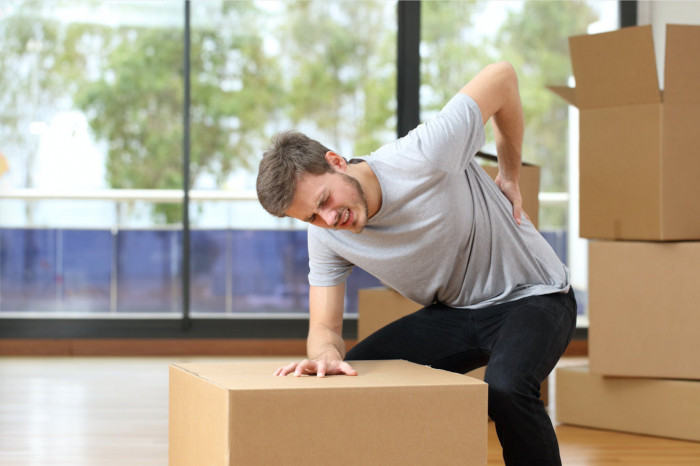How does the Quadratus Lumborum (Q.L) muscles play a role in back pain?
The Q.L muscles (Quadratus Lumborum) are the most common cause or culprit of acute lower back pain.
The Q. L’s attach to the top of the posterior pelvis (iliac crest) at the bottom of the lower back, branch out onto the transverse processes of the lumbar spine and insert onto the 12th rib.
The Q.L primary action (movement that the muscles assists with) is lateral rotation of the lumbar spine when acting unilaterally.
The areas where people get pain with a tight or restricted Q.L muscle:
- Pain right beneath the 12th rib at the Q.L insertion
- Pain right above the iliac crest at the base of the lower back
- Pain just lateral of the spine, where the Q.L originate from the L1-L4 transverse processes of the spine
- Pain in the mid belly of the Q.L, typically halfway between the 12th rib and top of the iliac crest, and further lateral of the spine.
The movements where people get pain with a tight or restricted Q.L muscle:
- Arching the back, causes pain due to shortened of the already tight and flared up Q.L muscle/s.
- Lateral rotation of the spine, causes pain due to the pressure placed on the flared-up Q.L muscle/s.
- Standing or sitting
What causes the pain:
- Active trigger points in the muscle mid belly
- Solidified connective tissue at the origin and or insertion of the Q.L muscle.
- Restricted lumbar spinal segments
What causes the Q.L muscles to get tight and restricted in the first place
- Most commonly overuse and fatigue
- An excessive lordotic curve
- Weakened gluteal muscles place excess load on the Q.L muscles
- Weakened postural muscles, affect functional pelvic movement which overloads the Q.L muscles.
What should you do if you have back pain generated from Q.L tension/ restriction:
If it is your first-time experiencing pain, it's important to note that you most likely have over fatigued your Q.L muscle. Pain generally subsides as the muscles recover over a 1-3day period. If you find relief from heat packs, continue applying, along with hot baths and shower to encourage blood flow and movement to the muscles of the lower back. Heat rubs can also be of assistance if you need to continue with physical activity for work or sport, however, most ideally rest until the muscle’s recovers would be most preferable.
If you are experiencing ongoing constant or repetitive Q.L pain, then it is imperative that you seek a healthcare professional who will address the cause of your Q.L pain.
A quality practitioner will:
- Assess to see if you have an excessive lordotic curve that needs to be addressed.
- Establish whether you have weakened glutes that need to be functionally strengthened
- Assess and correct your postural symmetry to ensure you are moving in a way that is not overloading your Q.L muscles, causing painful restriction.
Back Solution across America has a proven record with acute and chronic back pain sufferers exceeding in excellence across the country. We have treated thousands of patients that range from Olympic athletes, professional athletes as well as everyday pain sufferers. Our rapid growth across the country will ensure a local clinic will be in your area soon to address you acute and chronic back pain.

